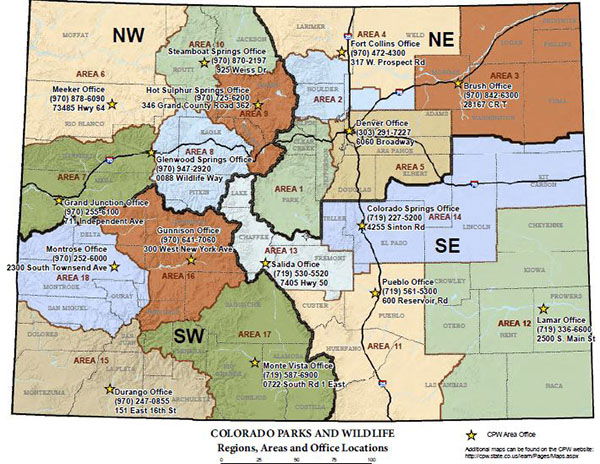Colorado Parks and Wildlife asks Coloradans to stay bear aware heading into winter season
STATEWIDE, Colo. (KRDO)-- A drop in bear sightings this year indicates a bountiful season for natural food crops for bears. Between April 1st and October first of this year, there were 3,130 bear sightings across the state, according to Colorado Parks and Wildlife. During that same timeframe last year, there were 4,412 sightings. Now, wildlife officers are calling on Coloradans to make sure they don't have anything on their properties that can draw a bear in.
This time of year bears are preparing for hibernation, in a calorie-packing time called hyperphagia.
“Bears are biologically driven to pack on calories in preparation for winter and they spend increasing time looking for the most efficient way to do so,” said Area Wildlife Manager Kris Middledorf. “Residents must realize it is their responsibility to secure their trash, remove other food attractants such as bird feeders, and protect backyard livestock with appropriate electric fencing to avoid conflicts that arise from attracting bears to homes."
Bear sightings are down statewide this year, but according to CPW there are still some areas of concern. CPW’s bear report numbers since the start of hyperphagia indicate the Routt County area is seeing more bear calls this year.
This map breaks down the different areas across the state that wildlife officers use to track bear sightings.

Bear reports received, Aug. 1 - Sept. 30
2019: 1,935 statewide | 40 for Area 10 (includes Routt County)
2020: 1,698 statewide | 27 for Area 10
2021: 832 statewide | 84 for Area 10
“We don’t know for certain yet whether that’s due to drought, lack of natural food sources or other factors,” Middledorf said. “CPW is grateful that the Steamboat Springs community worked with us last year to pass a bear-resistant trash container ordinance, which has really helped with what might have been a year with even more conflicts.”
You can be "Bear Aware" by securing trash cans and dumpsters, removing bird feeders, closing garages, cleaning and locking your car and house doors and calling CPW when bears become a nuisance.
Drought conditions and other factors that may influence the availability of natural food crops for bears varies across the state, as does the behavior of people when it relates to human-bear interactions. Those all play a role in the bear activity that we see annually.
Click here for a full break down on each area's bear sightings for the year and how that coincides with their habitats.



